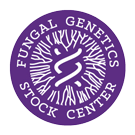Strain: Neurospora crassa
FGSC #2375
Reporting Genes: sor-1 ylo-1
Species: crassa
Allele: 10(r) 30539y
Depositor: WK
Linkage Group: VIL VIL
Mating Type: A
ref1: Klingmuller 1967 Mol Gen Genet 100:109-116 XK56
ref2: 100:256-263 XK56
Genes

Reporting Genes: sor-1 ylo-1
Species: crassa
Allele: 10(r) 30539y
Depositor: WK
Linkage Group: VIL VIL
Mating Type: A
ref1: Klingmuller 1967 Mol Gen Genet 100:109-116 XK56
ref2: 100:256-263 XK56
